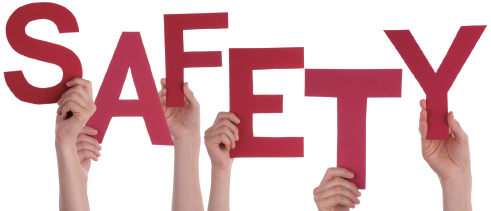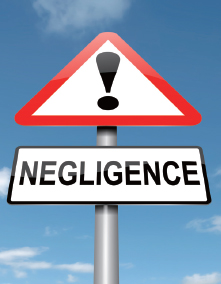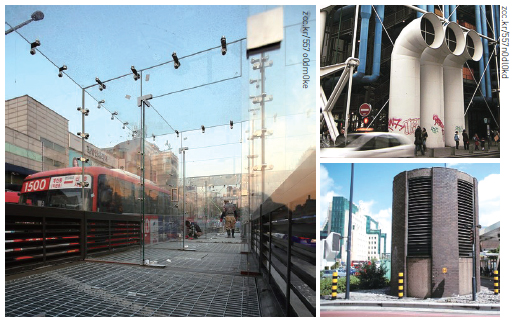There is a joke that has been around this year: The goal of 2014 was to “SURVIVE.” When you look back at this past year, in few words, it can be explained as “safety accidents.” Numerous fatal accidents occurred throughout the year, and a number of people unfortunately lost their lives. Surely, there have been sporadic occurrences of safety accidents in our society, but in this year, their scale or frequency have been increased which shows us that the importance of alertness and preparation cannot be stressed enough. In this section, in light of this, we will look into the cause of the accidents and promote awareness of the dangers which seem so close to us.

It has been a quite troublesome year with so many tragic events. The tragedies were especially caused by the problem with safety, and it made us more nervous who feared “I” might be the next target, because many people are now thinking that the dangers are lurking everywhere and anywhere. Despite these concerns, the accidents have ceaselessly occurred until recently, and we should know it cannot be overlooked to possess potential dangers in our society that will threaten us in the near future. Considering the accidents happening this year, we can analyze the problem and the causes of them.
1) A lack of supervision on the poor facilities
Many of the accidents this year were all related to improper safety precautions; a lack of supervision and poor facilities that failed to meet even the minimum safety standards can be blamed for the first cause of fatal accidents in our society. You must remember the accident in the past winter: the ceiling of Mauna Resort in Gyeongju collapsed, and a hundred or more freshmen were killed or injured. Three main factors were exposed as the cause of the accident: Poor construction, a lack of snow removal operations, and regular safety checks.
Sangwangsimni Station, line Number Two, also had a problem with its operations in April, and the crash caused by this problem resulted in 238 casualties. Immediately after the accident, malfunction of a signal which shows Go, Stop, or Warning signs to an engineer was first broadcast as the reason. As the investigation progressed, however, the actual cause of the collision was laid on delayed time to replace worn-out manual train control systems to automatic ones to save the budget. Seoul Metro, as a result, has mixed two different types of systems, which could not be basically compatamized, and it brought about the disaster.
Last May, the fire on Goyang Terminal also victimized 70 people. The prosecution announced that the legal construction code and safety standards were violated; an unlicensed welder was in charge of welding operations. To worsen the matters, an unprofessional built the fire protection facility, whose sprinkler system did not work properly in time. As a result, illegal employment of the unprofessional led to malfunction in necessary systems to cause and worsen the fire.
It seems that even after the disastrous accidents, management and supervision are not altered in order to protect potential dangers. According to a report by Seoul Metropolitan Government, it is proven that fire-fighting facilities in six major tunnels in Seoul (Nam-san No.one~three, Hongjimun, Jeongneung, and Guryong Tunnel) are under considerably poor management. Most of the facilities are already over their sustaining period, and basic essentials like fire extinguishers or emergency lights are not prepared. Even if there are, many of them are not able to function properly due to old age. There have been large and small fires every year in the tunnels, and we can find that such a readiness is still much to be desired in response to future crisis.

The second side that we have to consider is about follow-up measures. We should think of one question: Were there any proper actions or manuals to deal with the problem when the accidents took place? Here is a direct example of the problem and, it resulted in 304 deaths.
The captain and crews of Sewol ferry was being blamed for their illegal or irresponsible actions. They ignored statutory regulations on the marine law that the rescue of passengers in a wrecking ship should be prioritized. It was not only a factor that brought about the disaster, and the disaster countermeasure systems of the government did not function. There was no leader, and there was no clear or prepared action to deal with the problem or to rescue the alive people. These inadequate laws and unprepared measures in response to the disaster not only leads to terrible accidents but also lasting pains and damages.

It can be pointed out that many people are quite insensitive to safety. Only a few months ago, there was a calamity that the subway ventilation facility collapsed in Seongnam, Gyeonggi-do; 27 people were either injured or dead. Looking into the accident, absence of safety guards and facilities at that site, and improper construction works from the beginning were the reasons behind this case. As you can see, widespread ignorance towards safety was also important, however, it seems that the insensitive civic awareness is growing continuously in our everyday lives. Only what we do not seem realize is how serious the problem has become.
Last June, there was a first nationwide fire drill in Samseong-dong, Seoul, and we could see our chilly attitude, enough to be called “anesthesia.” A considerable number of people nearby continued on their ways while the drill was taking place, not wanting to participate and pay attention to the instructions of the safety officers. Situations on the road were not way for fire trucks,” required as a minimal effort to prepare for an actual emergency, was simultaneously conducted throughout the country in last October.
The fire trucks were blocked by illegally parked vehicles from the start, and there was a traffic jam on the road not trying to move aside in disorder. Pedestrians waiting for the signal did not want to wait for the fire trucks passing by, also showing a lack of civic awareness on the safety. The trucks in the training could not observe 15 minutes “golden time,” and they were delayed for seven minutes. If it were a real situation, seven minutes could be long enough to cause a great deal of damages.
The UOS Times conducted a survey on the awareness of UOS students to the safety. When the students were asked about how secure they would feel in case of disasters or calamities occurred in our society, most of the students answered “Not secure,” which seems to be affected by recent accidents in 2014. 59 percent are also thinking that they might not correctly react to the crisis because they have no experience of training to deal with the problem. The fact that about 40 percent of the respondents who answered still “No” in the second question are saying that they had experienced the discipline but thought it might not work in the emergency reflect the present state of safety education. In spite of the experience, they are not convinced they can cope with the crisis, and it infers that more detailed and precise instructions on the education or drills are needed in society to protect their lives.
As it is shown in the fourth and the fifth question, most students think the subsequent measure enacted following the tragic accidents occurred is quite lacking.
They chose three items at the very similar rate, and we can know that the safety problem is a considerably overall and complicated problem with no single cause, so it is most recommendable to prepare and correct the wrong than to figure out who or what to deprecate.

Then, are there any changes or plans to be changed in terms of regulations, facilities, or the manner of execution? If there are, are they effective, and what are the examples of those?
One of the most noticeable changes is increase in budget of Seoul for safety in 2015. About 1.1 trillion won is allocated to the secure safety, which is 22 percent point increased estimate than that of the previous year. The following glass wall plans are also a part of it. On Oct. 29, 12 days after the falling accident in Seongnam, a glass wall was built on the ventilation facility at Mapo-gu, which is aftermath of an investigation of the government into the actual status of outdoor facilities.
According to new measures that the government announced, newly built subway ventilation facilities must be over a person’s height, and they should be built two meters apart from crowded locations like the roads and the parks. If they are over two meters tall, installations to protect from the fall and the protection glass should be also constructed. According to a report provided by Ministry of Land, Infrastructure, and Transport of Korea (henceforth, MOLIT), until the new masures were enacted , there have been no detailed safety regulations or standards for ventilation facilities like building materials and strength of the lid or for regular safety checkups. This new action of the government, thus, seems to be quite valid, but some also say the measure is flawed in regards to its functionality and safety.
They say that the closed glass wall could make a problem regarding air circulation, the purpose of the facility’s existence. It is expected that there will be additional worries as the walls are being built, and we need to monitor the situation for the next years. It is not just one example that the follow-up measures are being questioned.
Until recently, MOLIT have conducted a monitoring project for construction standards from July. According to the result of the interim checkup, poorly constructed sandwich panels which were mainly responsible for Mauna Resort accident are still rampant. MOLIT collected 30 samples from 22 sites in the country; 23 samples among them were disapproved in the quality testing. It is obvious that in spite of the disastrous accident which took many young lives, actual measures are hardly taken to improve the life-threatening facilities.
Even after the fire on the nursing facilities in Jangseong, such initiative which is enacted just for show. After Janseong accident, a newly revised plan for safety management of the nursing facilities was introduced, but it cannot reflect the actual situations and contradicts with the existing law. Nonetheless, it seems that the monitoring system of the government is being reinforced, but the actual status still shows much to be desired.

We looked into some simple examples of the changes, which does not seem quite valid, and now let us compare some differences with other developed countries. When you look at the pictures of other countries’ subway ventilation facilities, you know they are quite different from ours. In the case of France and Britain, the facilities are designed in a way that risks no lives and even look like works of art. It can be avoided altogether by limiting the access; However, 1,777 among 2,418 facilities in Seoul are exposed to the dangers directly.
Japan and U.S.A are also few countries that are in compliance with their safety codes. Over 90 percent of nursing facilities in Japan are run by a complex system, which combines the medical care with welfare packages. They have a considerable number of nurses and therapists who can care and manage patients more consistently and effectively. After a big fire at the facility in 2006, Japan made it obligatory to make slides for fire escape and sprinklers in all of the nursing facilities, and so does U.S.A. When there is a big disaster in other countries, how do they react to the situation? Last April, the Sewol Ferry Tragedy occurred, the government was blamed for its poor and naive measures and rescue systems, not to mention poor leadership of the executives and a lack of equipment.
U.S.A has specific maneuver scenarios in advance, and this system has prepared many trained rescuers to step forward in an emergency. They are also running Coast Program, which was made to respond swiftly to the emergency on the ocean. It analyzes the frequency, types, and the causes of the marine accidents beforehand, detects ships in, and sends a patrol ship in time and place with a high frequency of accidents to minimize the damage.

There are many causes and factors that bring on the safety problem, and we know they are still around us. When we look back at the year, it was so frequent enough that we can say that it is quite a fortune that we have survived. Most of the accidents were man-made catastrophe.
It was preventable if there was right safety standard and if it was rightfully acted and supervised. If we regard them as a temporary misfortune, it will come to us as irreversible tragedy, causing many deaths of our people, maybe our own, yet again. Protecting the lives and safety of citizens is what has to be the aim of the nation, and we need be aware ourselves.
On April, we said towards the sinking ship: We will remember you. As we close the year 2014, it should be the year we should not forget. Are we trying to keep a promise?
Ham Seul-ki Reporter
hsk9409@uos.ac.kr

